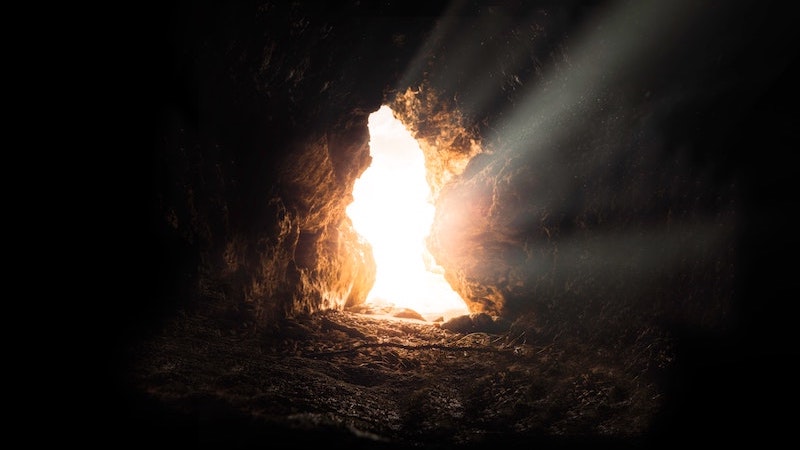That which you make conscious cannot remain unconscious
- 3 September 2021
- Posted by: Michael H Hallett
- Category: Emotional principles ,

In 1998, using a personal development tool called the Enneagram, I broke into my unconscious and started to clear its toxic contents. It’s taken me ever since to articulate it, but this is perhaps the First Law of the Unconscious: that which you make conscious cannot remain unconscious.
By this, I mean that once you understand that a certain piece of programming must exist in your unconscious—and you’re close enough to the truth—then that programming must let go and enter your conscious awareness. As it does so, all unprocessed (i.e., unfelt) pain associated with it must be felt. Simultaneously, all negative thoughts, feelings and behaviours associated with it must cease.
The First Law of the Unconscious, then, gives us a structured process for identifying, accessing, and emptying our unconscious.
Repression
By definition, the contents of our unconscious are, well, unconscious. They are impervious to rational examination. You cannot put them under the microscope. You cannot sit down and journal them. You cannot genome sequence them. They sit there, glowering, buried beneath a layer of unconscious shame, affecting our lives in many ways.
In Debugging the Universe, Laura Knight-Jadczyk describes the unconscious as “the realm from where our world manifests, in which are found unfathomable depths of the rejected, the unacknowledged, the unrecognised, the unknown and undeveloped elements of our existence.” In other words, what we repress.
Sigmund Freud, the ‘father of psychoanalysis’, saw repression as an unconscious mechanism for warding off socially dangerous impulses, i.e., those that violate prevailing social rules. He considered this “the corner-stone on which the whole structure of psychoanalysis rests.”
Cannot remain unconscious
The contents of our unconscious remain buried as long as we repress them.
As long as we allow the contents of our unconscious to remain repressed, they will do so. They will never budge by themselves.
As long as we allow the contents of our unconscious to remain repressed, they will do so. They will never budge by themselves.
However, they cannot remain unconscious if we choose to enter what early psychoanalyst Wilhelm Reich calls “the great realm of the unconscious.”
Parapraxes
In The Psychopathology of Everyday Life (1901) Freud posited the idea of parapraxes, better known as Freudian slips, which are attempts by repressed impulses to break into conscious awareness. He termed this process the ‘return of the repressed’.
Freudian slips are usually thought of as spoken faux pas. I can remember, during a visit to Mount Orgeuil castle in Jersey, a lady reddening with embarrassment (i.e., shame) after mentioning the castle’s impressive fornications—oops—fortifications.
Freud had a much broader view of parapraxes, including not only supposed errors in speech but also of writing, memory, action, and chance events. The word parapraxes derives from the root para, which has multiple meanings including ‘incorrect’ or ‘abnormal’, and the Greek praxis, which means ‘doing’ or ‘a deed’.
What identifies these seemingly unrelated phenomena as parapraxes is “the ability to refer the phenomena to unwelcome, repressed, psychic material, which, though pushed away from consciousness, is nevertheless not robbed of all capacity to express itself.”
Freud is saying that Our lives are constant feedback loops. Our unconscious is constantly communicating with us through seemingly odd occurrences. We just need to look out for parapraxes to find the clues necessary to unravel our inner world.
The ‘inner observer’
What do these clues look like? They are always pain points—moments when life hands up something we don’t want. We feel a pang of pain, often almost undetectable. Our response is usually to brush it aside, ignore it, and look to replace it—smother is a better word—with something pleasurable.
Anything.
Any kind of anaesthetic will do.
Sex, drugs, rock’n’roll. Alcohol. Food. Social media. Netflix bingeing. Porn, self-harm and other cyclical addictions. Wine o’clock. A week’s holiday in Spain. Now.
We do this because we’re desperate to believe there’s nothing in us that violates our society’s definition of acceptability. Anything that does, we’re ashamed of. Anything that we’re ashamed of, we repress. The mechanics of the unconscious are brutally simple.
You must go against this instinctive urge to avoid these pain-points. As Laura Knight-Jadczyk writes, “People do not realize that, in order to diminish darkness, they must focus on it.”
This focus is called your ‘inner observer’. It’s an internal ‘eye’ with which you scan your unconscious, feeling for pain that’s ready to come to the surface. It’s a muscle that develops with practice. I’ve written more about it in How to develop your ‘inner observer’.
The key to the unconscious is intentionality. The “great realm of the unconscious” is there for the taking. That which you make conscious cannot remain unconscious.
Photo by Bruno van der Kraan on Unsplash
